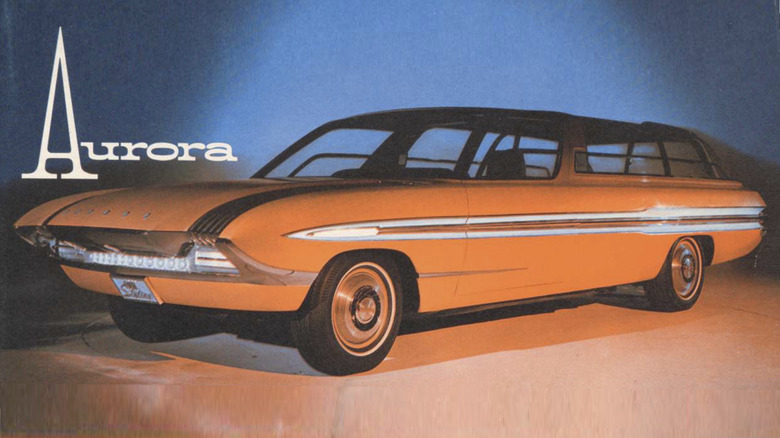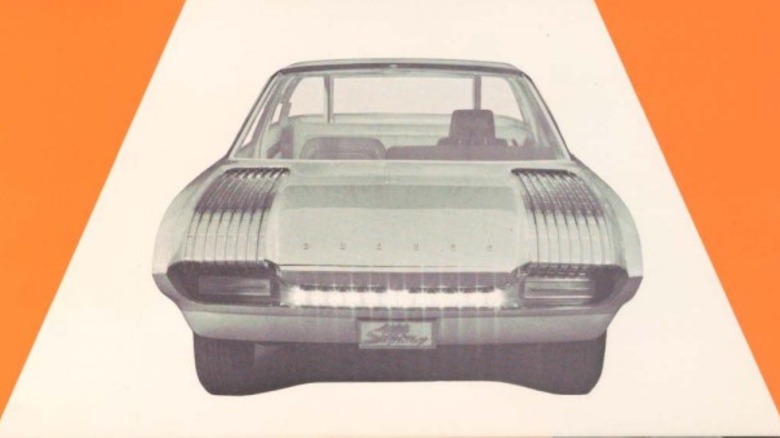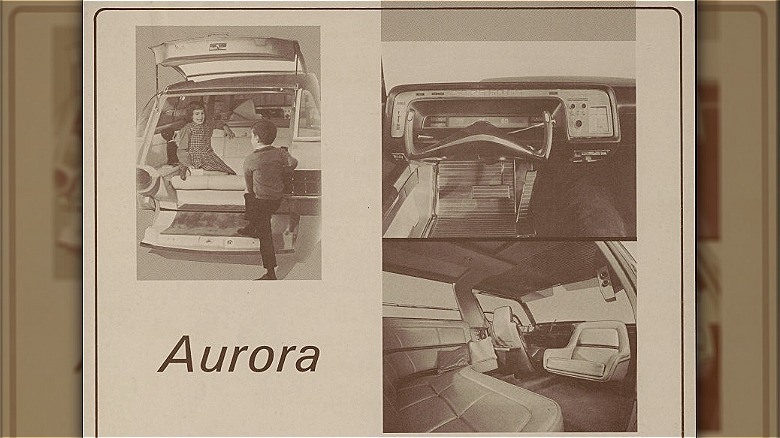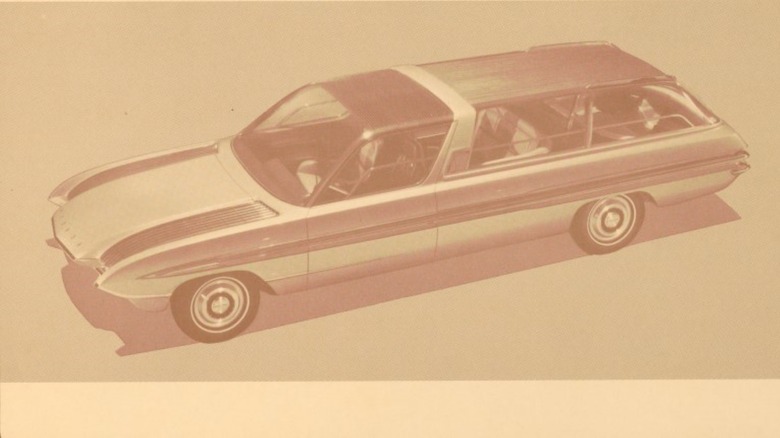The 1964 Ford Aurora Was An Incredible Space Age Station Wagon Concept
Long before minivans, crossovers, and full-size SUVs became the vehicles of choice for driving kids around, station wagons held the family-hauler crown. Wagons like the Chrysler Town and Country, Oldsmobile Vista Cruiser, and Mercury Colony Park occupied driveways all over the United States in the 1960s and 1970s.
Ford, in particular had the Country Squire series of wagons that were adorned with an entire forest's worth of wood paneling and stretched several city blocks in length. The 1961 Country Squire could be optioned out to comfortably seat nine passengers in a cargo space of 93.5 cubic feet behind the first row of seating (via Ford). For comparison, a 2023 Ford Expedition has 104.6 cubic feet of cargo behind the front seat. The Expedition can fit slightly more cargo than the Country Squire, but it can't quite seat almost an entire baseball team's worth of passengers.
At the New York World's Fair, Ford unveiled a concept that it thought was the most advanced station wagon to ever come out of Dearborn, the 1964 Ford Aurora.
A living room on wheels
For decades, station wagons from all automakers were essentially just large sedans with more cargo space, both mechanically and in general function. Ford wanted to change that with the Aurora concept. Ford's director of styling at the time, Gene Bordinat said: "Of equal significance, it may foretell the day of station wagon designs with completely unique chassis components divorced from passenger car lines ... It is a rolling laboratory of new ideas in styling and engineering for the future."
In a brochure for the Aurora concept, Ford stated that the new space-age wagon featured no less than 23 unique features that set it apart from every other vehicle on the market. Those features included (but were not limited to): a wraparound windshield, electroluminescent lighting, a clamshell rear entry system, interior swivel chairs, and a polarizing sunroof. Strangely, the Aurora came equipped with a sound-isolated "children's compartment" in the back where children were separated from the rest of the passengers by an interior power window.
The interior of the Aurora looked more like a living room than a traditional station wagon. The back seat was referred to as a sofa and looked the part. It also sported a "communications console" that tripled as a radio, television set, and refreshments cabinet. In addition to the stately interior, the Aurora had a yoke steering wheel not unlike the configuration that's all the rage among EVs today.
Decades ahead of its time
On the outside, the Aurora took the space-race craze aesthetics from the time to heart. It had a pointy front nose and a greenhouse big enough for a rain forest. The car didn't have traditional headlights, but 12 one-inch sealed beam lights in an array that Ford called "minibank headlamps" that it claimed would "produce controlled road illumination with many stages between the dimmest and brightest extremes." Those were essentially daytime running lights, decades before that was a common feature on most vehicles.
The Aurora was 227.55 inches long according to Ford and had a 131-inch wheelbase. The aforementioned 2023 Ford Expedition has a 131.6-inch wheelbase at its longest MAX configuration and is a total of 221.9 inches long.
Like most concept cars that pushed the envelope, Ford never intended the Aurora to become a full production. It was more of a test bed for all the wild station-wagon related ideas that Ford had at the time. Some ideas like the yoke steering wheel and so-called "minibank headlamps" are forerunners to features we see today. But some features, like the sound proofed "children's compartment in the back of the wagon, are better off staying in 1964.



